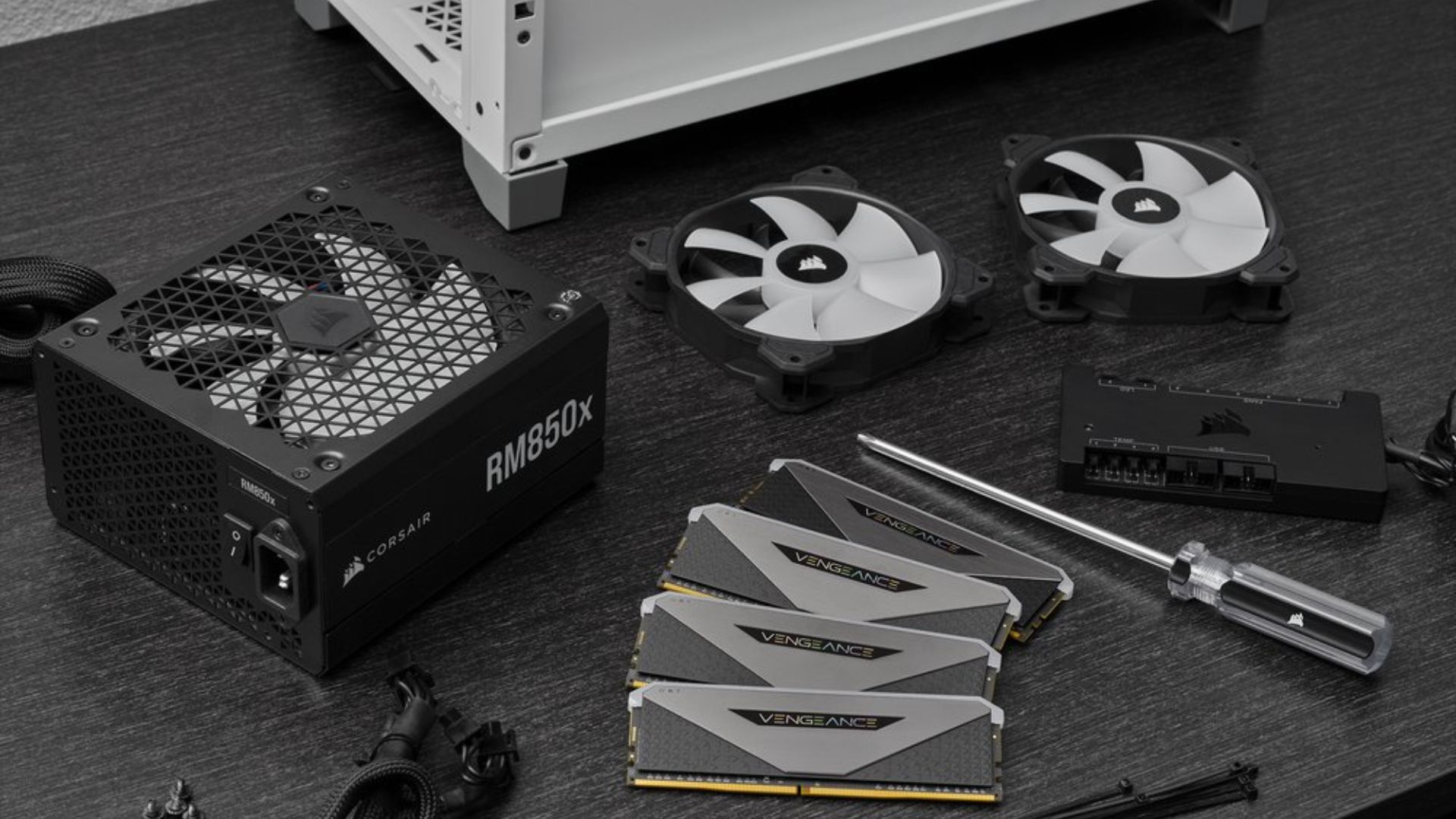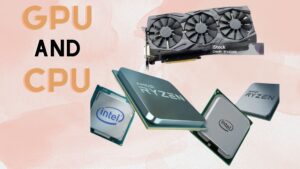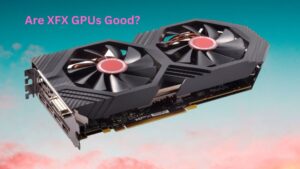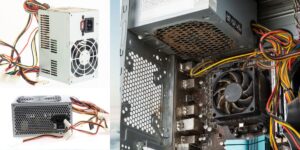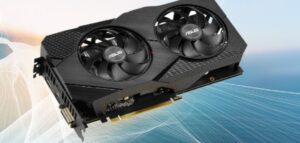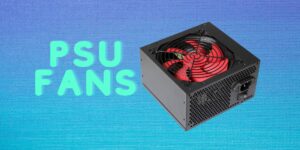How To Know If PSU is Failing | A Comprehensive Guide
A Power Supply Unit (PSU) is a critical component of any computer system, providing the necessary power to all the internal parts. However, like any electronic device, PSUs can fail over time, leading to a range of issues that can affect system performance and stability. Recognizing the signs of a failing PSU is essential for preventing data loss and hardware damage. Common indicators include unexpected shutdowns, random restarts, unusual noises, and failure to power on. Additionally, users might notice fluctuations in performance, such as slow boot times or erratic behaviour from components. Understanding these symptoms can help in diagnosing PSU issues early, enabling timely replacements or repairs. In this guide, we’ll explore the key signs that indicate if PSU is failing, along with steps to troubleshoot and ensure your system remains operational and reliable.
Understanding the Power Supply Unit:
The Power Supply Unit (PSU) is a vital component of a computer system, responsible for converting electrical power from an outlet into usable energy for the internal components. It supplies power to the motherboard, CPU, graphics card, and other peripherals while ensuring stable voltage levels. PSUs come in various wattages, tailored to support different hardware configurations and performance needs. They also feature protection mechanisms against overvoltage, short circuits, and overheating, enhancing system reliability. Understanding your PSU’s specifications, such as efficiency ratings (like 80 Plus), is crucial for optimizing performance and energy consumption. A well-functioning PSU not only powers your system but also contributes to its longevity and overall stability.
Signs of a Failing PSU:
Let’s understand that How we can Know If PSU is Failing:
1. Random Crashes and Reboots:
- One of the most common indicators of a failing PSU is experiencing random crashes or sudden reboots. When the power supply cannot consistently deliver the required power to your components, your system may shut down unexpectedly.
2. Unstable Voltage:
- Fluctuations in voltage can cause instability in your computer. If you notice frequent voltage spikes or drops, it may be a sign of a failing PSU. You can use hardware monitoring tools or a multimeter to check the voltage levels.
3. Strange Noises:
- A healthy PSU operates silently. If you start hearing unusual noises such as buzzing, whining, or clicking, it could indicate a problem with the internal components like capacitors or fans. These sounds are often a result of wear and tear.
4. Burning Smell:
- A burning or acrid smell emanating from your computer case is a serious red flag. It suggests that internal components, such as capacitors, may be overheating or failing. In such cases, it is crucial to turn off your computer immediately and investigate the source of the smell.
5. Overheating Components:
- Failing power supplies may cause increased heat in your computer case. If you notice that your components, especially the PSU itself, are unusually hot to the touch, it could be a sign of impending failure. Overheating can damage not only the PSU but also other critical components.
6. Peripheral Malfunctions:
- A failing PSU can impact the performance of connected peripherals. If you experience issues with USB devices, external hard drives, or other peripherals intermittently disconnecting or behaving erratically, the power supply may be the culprit.
8. Blue Screen of Death (BSOD):
- Inconsistent power delivery can lead to system crashes, resulting in the infamous Blue Screen of Death on Windows systems. While BSODs can be caused by various factors, a failing PSU should not be ruled out, especially if other symptoms are present.
9. LEDs/Lights Acting Unusually:
- Some PSUs have LED indicators to display the power status. If these lights are flickering intermittently, staying lit when the PC is off, or behaving erratically compared to when the PSU was new, it indicates internal faults disrupting the control circuitry. Additionally, certain components like graphic cards have their own LEDs/lights – if these suddenly stop illuminating or begin flickering out of sync, the PSU is a likely culprit.
10. Artifacting and Video Issues:
- As voltages fluctuate outside safe ranges, especially on the high current 12V rail that powers the graphics card, it can cause visual glitches known as artefacts on the screen. Black/colouration spots, screen tearing, or blocky/distorted images are all possibilities as the GPU operates unpredictably. Video corruption is often a late-stage failure symptom when voltage regulation has severely degraded.
How to Identify PSU Issues:
1. Use Monitoring Software:
- Utilize hardware monitoring software to keep an eye on your system’s voltages, temperatures, and fan speeds. Programs like HWMonitor, SpeedFan, or Open Hardware Monitor can provide real-time data, helping you identify irregularities.
2. Check Event Logs:
- Examine your computer’s event logs for critical errors or warnings. A failing PSU can trigger events that are logged in the system log. Look for patterns or recurring errors that coincide with system instability.
3. Perform a Paperclip Test:
- The paperclip test is a simple method to check whether your PSU can power on without being connected to the motherboard. By shorting the green wire (PS_ON) and any black wire (COM) on the 24-pin motherboard connector, you can see if the PSU’s fan starts spinning. However, this test only confirms basic functionality and doesn’t guarantee the PSU’s stability under load.
4. Use a Multimeter:
- For a more accurate assessment, use a multimeter to measure the voltages coming from your PSU. Connect the multimeter to the 24-pin motherboard connector while the computer is running, and compare the readings to the specified voltages. Any significant deviations could indicate PSU issues.
5. Visual Inspection:
- Inspect the physical condition of the PSU. Look for bulging or leaking capacitors, which are common signs of imminent failure. Additionally, check for burnt or discoloured areas on the PCB (Printed Circuit Board), as these indicate potential problems.
How We Can Save a PSU From Failing:
To prolong the life of your Power Supply Unit (PSU) and prevent it from failing, consider the following tips:
- Use a Surge Protector: Protect your PSU from voltage spikes by using a quality surge protector or uninterruptible power supply (UPS). This can safeguard against electrical surges caused by storms or power fluctuations.
- Maintain Proper Ventilation: Ensure that your computer case has adequate airflow. Dust buildup can cause overheating, so regularly clean the PSU and surrounding areas.
- Monitor Temperatures: Keep an eye on the internal temperatures of your system. High temperatures can stress the PSU, leading to failure.
- Avoid Overloading: Choose a PSU with sufficient wattage for your components. Overloading can lead to premature failure.
- Invest in a Quality PSU: Opt for reputable brands with good reviews and high efficiency ratings (like 80 Plus). A quality PSU is more likely to last longer.
- Regular Inspections: Periodically check for signs of wear, such as unusual noises, burning smells, or physical damage. Early detection can prevent further issues.
- Keep Software Updated: Ensure your system’s BIOS and drivers are up to date to maintain compatibility and stability, reducing strain on the PSU.
Maintenance Tips:
Here are some essential maintenance tips for keeping your Power Supply Unit (PSU) in good condition:
- Regular Dusting: Periodically clean the interior of your computer case, focusing on the PSU and its vents. Use compressed air to remove dust buildup, which can impede airflow and cause overheating.
- Check Connections: Ensure that all power cables are securely connected and not frayed. Loose or damaged cables can lead to power issues.
- Monitor Performance: Use software tools to monitor voltage levels and temperatures. Fluctuations outside normal ranges may indicate PSU problems.
- Avoid Overloading: Be mindful of your system’s power requirements. Upgrading components may necessitate a PSU with higher wattage.
- Keep Environment Cool: Maintain a cool and dry environment for your computer. Excessive heat and humidity can negatively affect the PSU’s lifespan.
- Use Quality Components: Invest in high-quality components throughout your system. A reliable PSU can help protect other parts from power-related damage.
- Inspect Fans: Ensure that the PSU fan is functioning correctly. A malfunctioning fan can cause overheating, leading to potential failure.
- Plan for Upgrades: When upgrading hardware, consider the power requirements of new components to avoid stressing the PSU.
- Test Regularly: If you suspect issues, use a PSU tester to check the unit’s output and ensure it’s functioning correctly.
Final Thoughts:
A Power Supply Unit (PSU) is crucial for maintaining a stable computer system, powering essential components like the motherboard and graphics card. Recognizing signs of PSU failure, such as random shutdowns, voltage instability, strange noises, and overheating, is vital for preventing data loss and hardware damage. Early diagnosis through monitoring software, visual inspection, and simple tests like the paperclip method can help identify issues promptly. To extend PSU lifespan, use surge protectors, ensure proper ventilation, and invest in quality components. Regular maintenance, including dusting and monitoring temperatures, ensures continued reliability. By understanding these indicators and taking proactive measures, you can maintain a robust PSU that supports your system effectively.
Last Updated on 27 January 2025 by Ansa Imran

Haleema is an experienced PC builder who has been building PCs for the last couple of years. He has written several articles on PC components, including power supplies and graphics cards. In his articles, he explains how to check the compatibility of a power supply with a GPU and what things to consider when pairing them.

